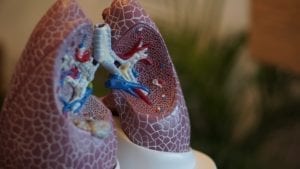Acute Respiratory Distress Syndrome (ARDS)
What is acute respiratory distress syndrome (ARDS)?
Acute respiratory distress syndrome (ARDS) is a lung disease that keeps oxygen from getting to the lungs and the blood. It leads to a buildup of fluid in the alveoli (air sacs), which stops oxygen from getting into the bloodstream. It also makes the lungs heavy and stiff, which hurts the lungs’ ability to expand. When the body’s organs don’t get oxygen, they can’t function. Many people who develop this disease are likely already in the hospital for another reason. This is because ARDS usually follows a major injury to the lung, either directly (trauma) or indirectly (because of another critical illness). It often occurs along with other organ failures, like the kidneys or the liver. ARDS can affect anyone who has suffered a severe injury or illness affecting the lungs, but it tends to affect older people.What are the symptoms of ARDS?
Symptoms usually develop within the first one to two days of the injury or illness, and they can vary in intensity but are usually considered a medical emergency. Some patients may be so sick that they won’t be able to complain about the symptoms. These symptoms include:- Severe shortness of breath
- Difficulty breathing
- Rapid breathing
- Hyperventilating
- Low blood pressure
- Confusion
- Extreme tiredness
- Organ failure
- Pale skin
- Blue skin, lips and nails (cyanosis)
What causes ARDS?
ARDS occurs when fluid leaks from the small blood vessels in the lungs into the tiny air sacs (alveoli) where blood is oxygenated. There is a protective membrane that keeps the fluid in the blood vessels. However, severe injury or illness can damage the membrane, which allows fluid to leak. Common causes that lead to ARDS include: serious infection throughout the body (sepsis), pneumonia, injury to the lungs, breathing vomit into the lungs, inhaling chemicals, lung transplant, multiple blood transfusions, and pancreatitis. Additional risk factors may include smoking and heavy alcohol use.How is ARDS diagnosed?
ARDS is diagnosed using the following procedures:- Physical exam to listen for irregular breathing
- Chest x-ray
- CT scan
- Blood tests
- Arterial blood gas
- Bronchoscopy
- Tests for possible infections
- Echocardiogram to rule out heart failure
What are the treatments for ARDS?
The goal of ARDS treatment is to provide breathing support, prevent further damage to the lungs, and treat the cause. Treatment options include:- Ventilator to deliver high doses of oxygen
- Removing fluid from lungs
- Medication to treat infections
- Medication to reduce inflammation
- Medication to relieve pain and sedate
- Medication to prevent blood clots
- Treatment of whatever injury or illness brought on ARDS
Where can I find out more about ARDS?
Acute Respiratory Distress Syndrome (ARDS) Articles

Exercise Can Reduce Risk of Severe COVID-19 Respiratory Complications, Says UVA Researcher
Jessica Lynn
May 6, 2020
Read More »

AI Can Predict How COVID-19 Might Progress to Acute Respiratory Distress Syndrome
Jessica Lynn
April 23, 2020
Read More »






